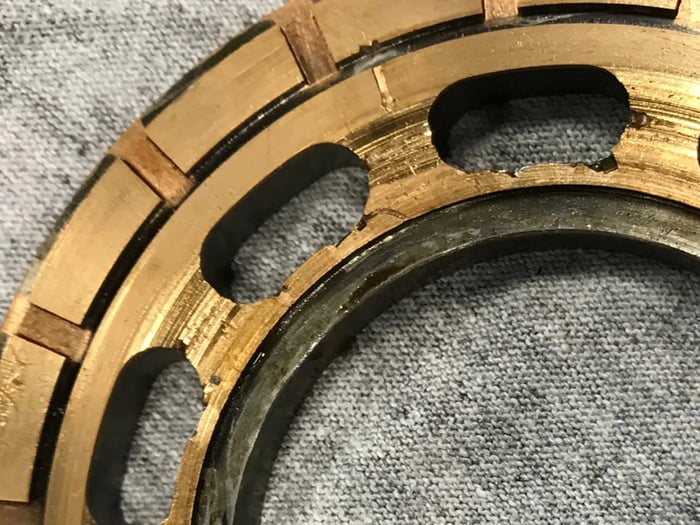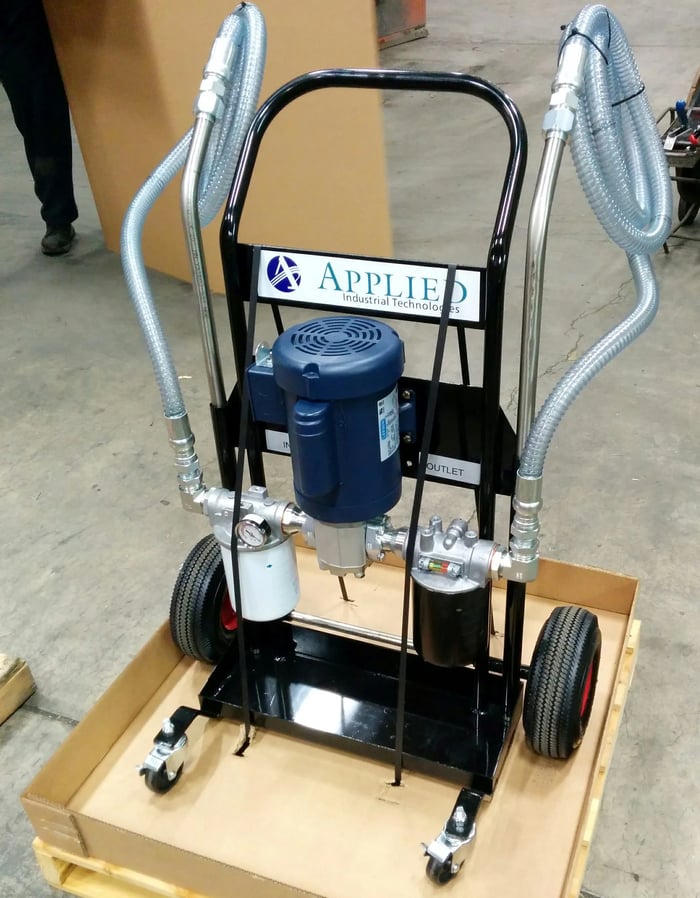Preventing Hydraulic Oil Contamination
Avoid premature hydraulic system failure by keeping your fluid clean
Article written by Applied Fluid Power with collaboration from Engineered Sales. Image above provided by SG Morris.
How does a hydraulic system become contaminated?
There are several types of hydraulic fluid contamination: environmental, system generated, and actuator generated. Any of these pose the same danger and can cause hydraulic system failure.
Environmental contamination refers to the physical surroundings of the hydraulic system. This kind of contamination is especially prominent in mobile hydraulics where the machine is exposed to the elements. Contamination can work its way into the machine through several channels; the reservoir filler breather, pump shaft seals, cylinder rod seals, or any leaky or loose connections are common points of ingress for foreign debris. In certain applications, it can be impossible to completely eliminate this type of contamination.
System generated contamination is created inside the machine where there is metal on metal contact. Even with the hydraulic fluid creating lubrication, there is still some level of contact between components, which leads to particles of metal being scraped off and introduced into the fluid flow. Gear pumps, for example, are known to be common causes of this kind of contamination because of the metal-on-metal contact inherent in their operation.
Actuator generated contamination is fairly self-explanatory. For example, when fully extended, cylinders are often exposed to the outside environment. And while the seal is meant to prevent contamination from getting into the system, it’s not perfect, especially in instances where the cylinder operates in dirty conditions. Contaminants that get onto the cylinder and pulled through the seal get directly into the fluid and is circulated throughout the system. This is very similar to environmental contamination but is more difficult to prevent because the exposure of the rod is an unavoidable part of its operation.
What damage does hydraulic contamination cause?
Hydraulic systems are driven by fluid pressure. So naturally the paths of the system must remain sealed to fully divert the fluid to where the work is performed. If fluid leaks or bypasses a seal anywhere in the system, then the pressure will be reduced at the point of work and may not be sufficient to move the actuator. To accomplish this, everything has to fit together very tightly in the system, any tiny gaps can cause fluid to leech out of the work path and degrade operation.
This is exactly what hydraulic oil contamination can do to a system. The solid matter in the fluid can scratch the interior of hydraulic pumps, hydraulic valves, and other components, including hydraulic motors. These scratches create alternate paths that bypass the intended direction of flow. If enough scratches build up, the loss of pressure could result in a system that can no longer perform the necessary work. Valves damaged in this way will likely have to be replaced as it’s often more economical than trying to repair the damage.
Alternatively, the sediment in the fluid can gather and jam up components. This is especially true in valves that are held in one position for long periods of time. If the solenoid coil is energized long enough, the debris may work its way behind the spool and prevent it from returning to neutral when de-energized.

Notice the pitting and scratches over the surface of this pump valve plate. This damage is caused by solid particulates in the fluid, and will degrade operation of the pump. (Image provided by SG Morris)
Choose the right components and hydraulic filter
Hydraulic contamination can be prevented by selecting the right component for the system, and applying filter capability in the right location of the system. These are not the only ways to prevent oil from being contaminated, but it’s a good start.
If the machine is sensitive to contamination, i.e. it has a lot of low-clearance passages and valves, consider upgrading from a gear pump to a vane pump or piston pump. As discussed above, gear pumps cause a lot of contamination, and should be avoided in sensitive systems. For systems that can run on dirtier fluid, gear pumps can, and often are, used because they are more economical.
Another consideration is the proper application of filter elements. Proper application in this case refers to the location of the filter in the hydraulic loop. The filter should be positioned upstream from the component that needs the most protection. As a hypothetical example, a log splitter has a filter on the return line from the actuator to the tank. This will protect the pump as it draws filtered oil from the tank, but will not provide any protection for the actuator. Given that the actuator in this case is operating in a dirty environment, it will likely generate the most contamination. Locating the filter downstream from the actuator in this system will prevent the contaminant from spreading to the pump and valves.
New oil is not necessarily clean oil
Something to note when talking about clean fluid is this: new oil does not mean clean oil. A common mistake customers make is to fill the hydraulic reservoir with fluid straight from a brand-new barrel. This could very easily introduce contaminated fluid into your machine. Your supplier doesn’t know your machine and isn’t necessarily optimizing the fluid to your requirements. Since you do know how clean the fluid must be, it is recommended that you filter the oil to the proper level with a filter cart as you fill your reservoir. It is only with this precautionary step that you can be assured that you are starting off with a fluid that is properly filtered for your system.

Filter carts should always be used when filling a reservoir with new oil to ensure the cleanliness of the fluid before it can contaminate the system. (Image provided by Kent Fluid Power)
Monitor the system for signs of hydraulic oil contamination
Detecting contamination is a challenge. Many harmful contaminants are smaller than the naked eye can see, so even clean-looking fluid can cause damage. In-line particle detectors are available from many filter suppliers, including Eaton, Hydac, Schroeder and Hypro. Contact your Applied Fluid Power sales representative for more details on how we can help you integrate one into your system.
Alternatively, you can (and should) perform a hydraulic oil sample analysis. This fluid analysis can be done in-house or can be sent to a company that handles fluid quality issues, typically your fluid supplier. Oil should be tested in this way periodically, on a schedule based on the manufacturer’s specifications. So take the time to get to know your system and the level of contamination that it can handle.
Hydraulic system preventative maintenance
A good way to avoid problems with your system is to replace parts before catastrophic failure. Don’t let anything fail while still attached to the system. When it becomes apparent that a component of the system is about to fail, it should be replaced right away. Catastrophic failure causes the system to be bombarded with contamination resulting from the failure of the component. Even if the failure ceased flow, contamination could still have been pushed throughout the system before flow completely stopped. Without flushing the system and cleaning the oil after a catastrophic failure, the contamination will likely cause other components to fail. This can be solved in two ways: replacing the part before failure, or if it did fail while connected to the system, by cleaning the fluid thoroughly before installing the new pump. Contact your Applied Fluid Power sales representative for help troubleshooting your machine or assistance in how to keep an eye out for parts that are about to fail.



